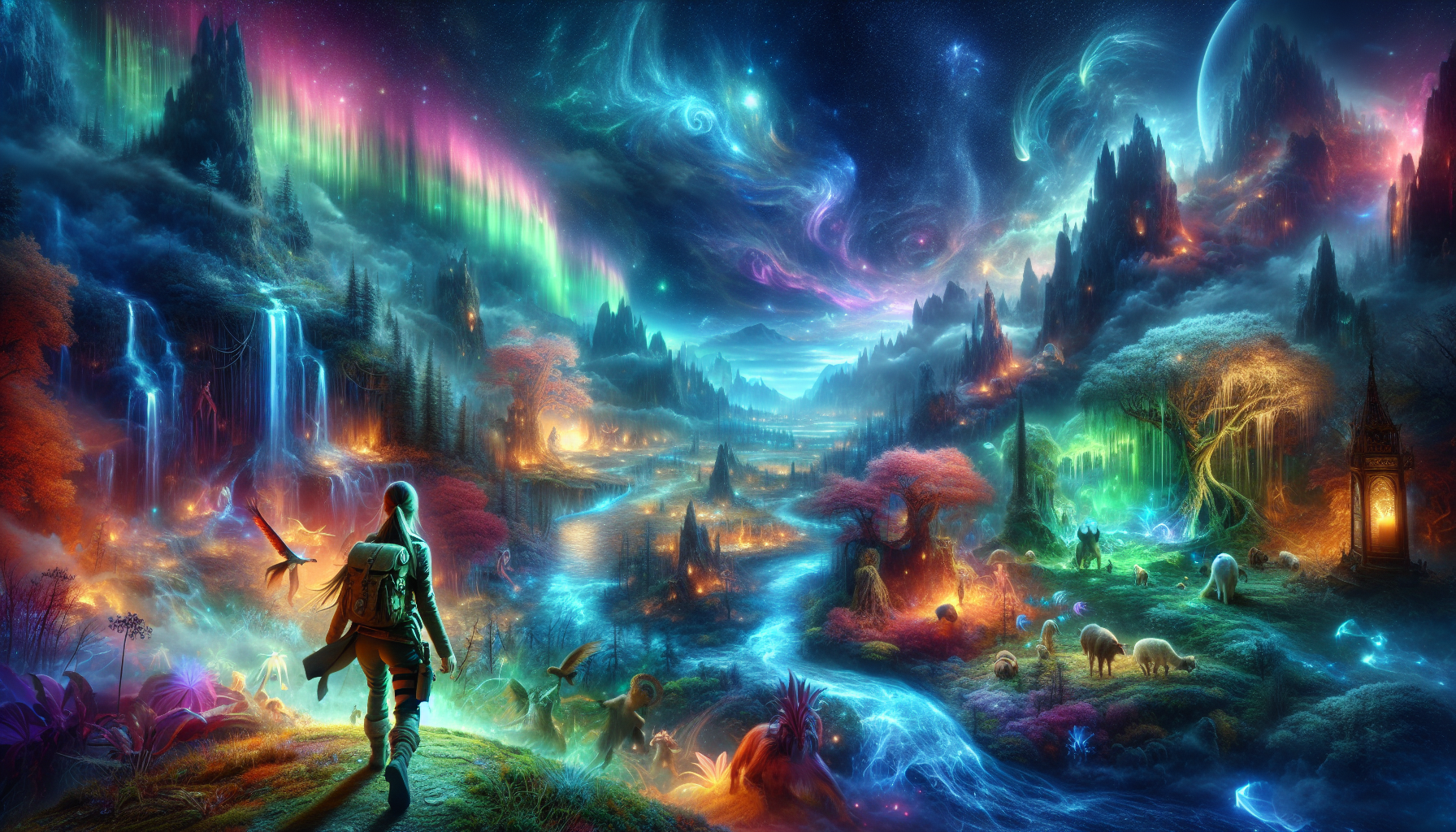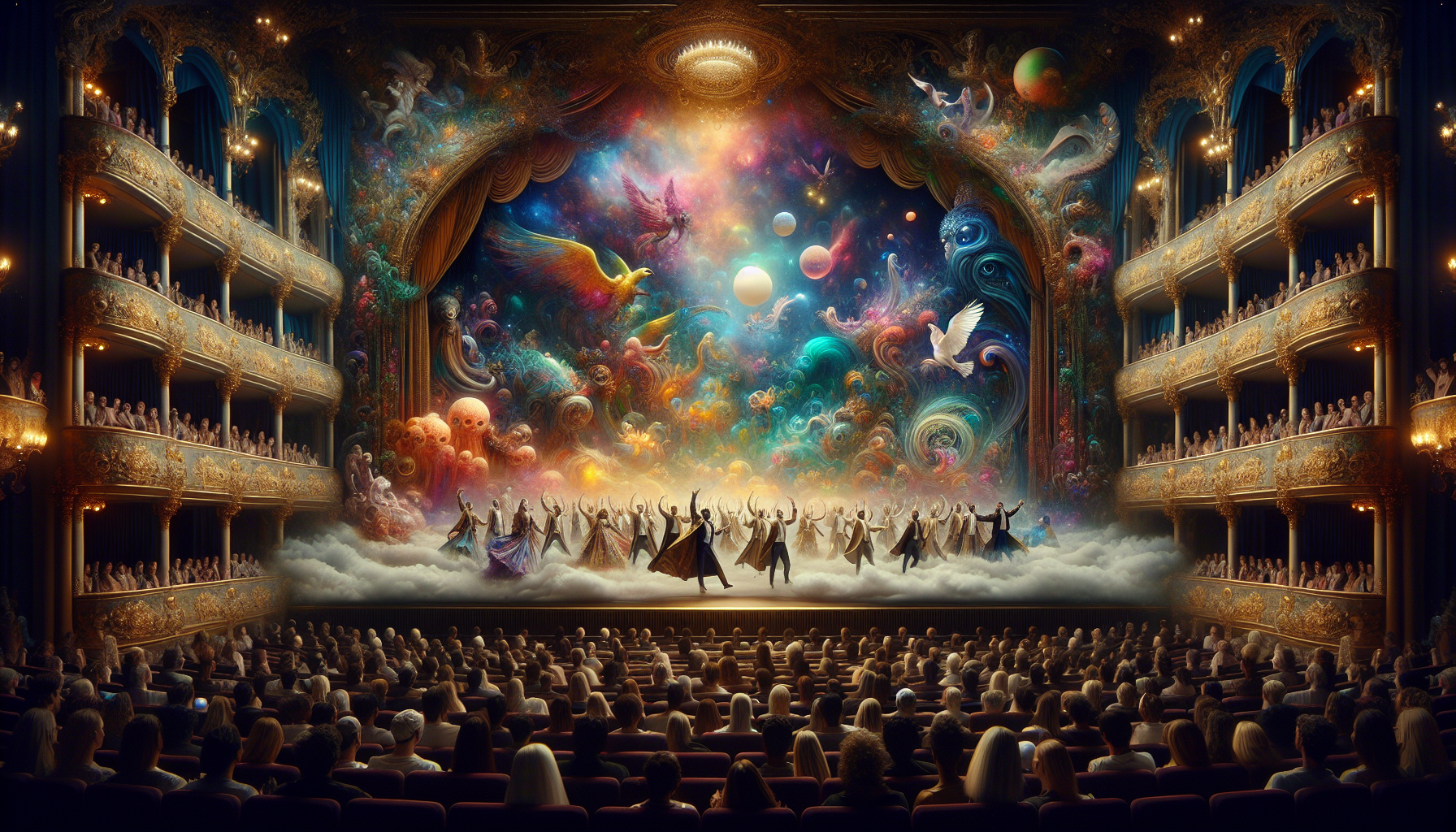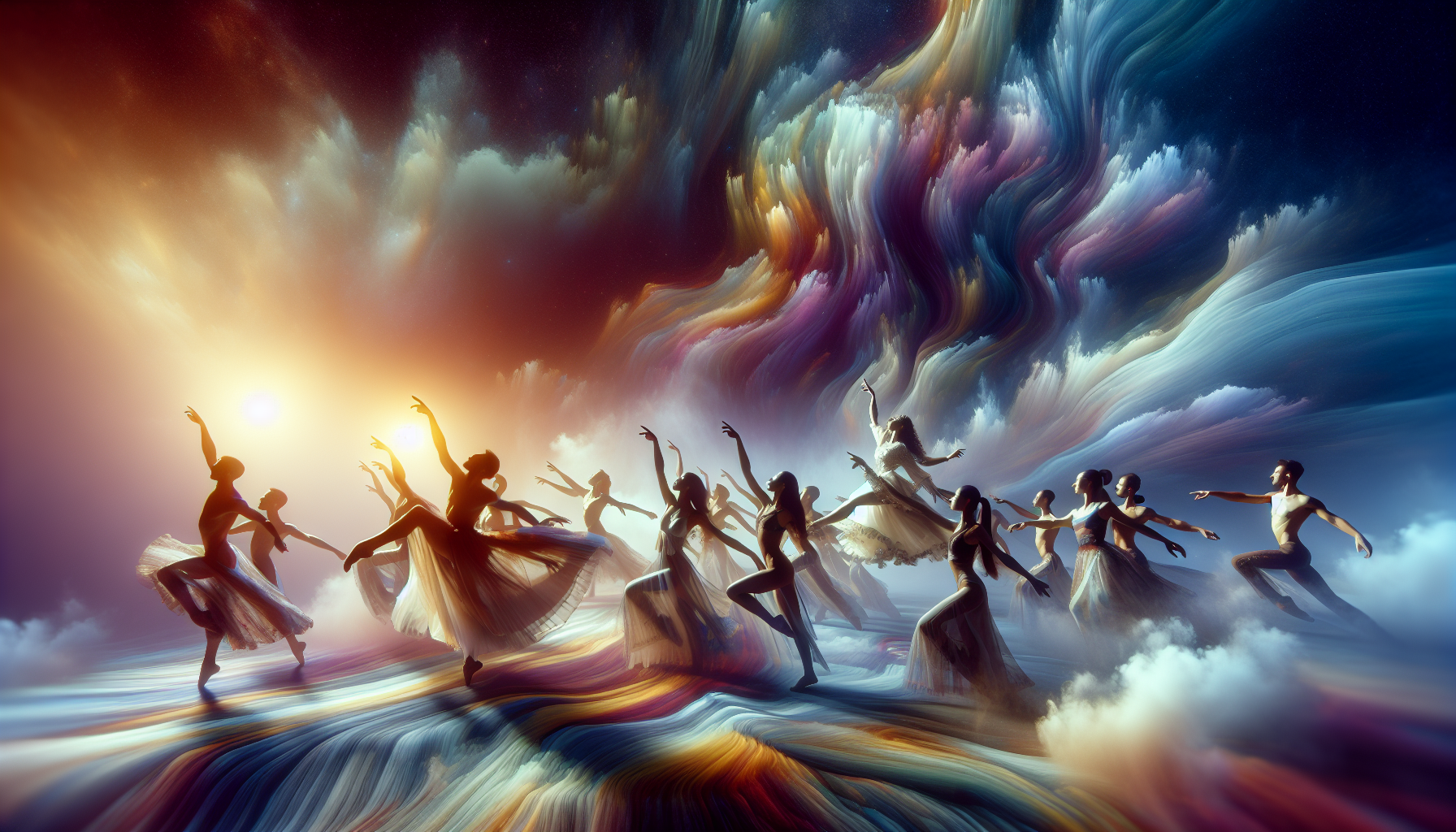In the quiet embrace of night, as the world slips into slumber, a mysterious realm unfolds—a realm where imagination reigns supreme and the impossible becomes possible. This is the world of dreams, an enigmatic tapestry woven from the threads of our subconscious thoughts, emotions, and experiences. But what if these nocturnal narratives are not solely the product of our individual minds? What if they are shaped by the broader currents of the world around us? 🌌 Welcome to the fascinating exploration of “Dreamscapes: How World Events Influence Our Shared Dreams.”
Throughout history, dreams have been a source of wonder and intrigue, with cultures around the globe attributing various meanings and powers to them. From ancient civilizations that viewed dreams as divine messages to modern psychological interpretations, the quest to understand the significance of our dreams is timeless. However, there is a compelling aspect of dreams that often escapes the mainstream discourse—their collective nature. As interconnected beings living in a shared global context, our dreams are not immune to the influence of world events. From global crises to groundbreaking discoveries, the events that shape our waking world can ripple through the fabric of our dreams, creating a shared dreamscape that transcends geographical and cultural boundaries.
In this comprehensive exploration, we will delve into the myriad ways in which world events permeate our dream worlds. We will begin by examining historical instances where collective dreaming mirrored societal upheaval or transformation. From the dreams of wartime civilians to those experienced during pivotal political shifts, history offers a rich tapestry of examples that illustrate the profound connection between external events and our internal dream landscapes. Furthermore, we will explore the psychological mechanisms that allow such influences to seep into our dreams, drawing insights from the fields of psychology, neuroscience, and sociology. How do our minds process and incorporate the weight of world events into the ephemeral realm of dreams? 🧠
The Connection Between World Events and Our Collective Dreamscapes
In the intricate tapestry of human experience, dreams hold a profound place. They are windows into our subconscious, often reflecting not just personal experiences but also broader societal changes and global events. Dreams can serve as a barometer for our collective emotional state, providing insights into how significant world events seep into our subconscious mind. This phenomenon is not just a topic of psychological intrigue but also an area ripe for interdisciplinary exploration, spanning psychology, sociology, and even anthropology. 🌍
The impact of world events on dreams has been a subject of increasing interest, especially in the context of unprecedented global challenges such as pandemics, wars, and economic upheavals. As the world becomes more interconnected through digital media, the boundary between personal and shared experiences blurs, allowing global events to infiltrate our dreams more readily. Understanding this connection can provide valuable insights into the collective psyche of societies, offering potential pathways for healing and resilience building.
Historically, significant events such as wars, natural disasters, and cultural revolutions have left indelible marks on the collective dreams of societies. These dreams often manifest as shared themes, symbols, and narratives that transcend individual experiences. For instance, during the COVID-19 pandemic, many people reported experiencing vivid dreams related to themes of isolation, fear of contagion, and existential uncertainty. This shared dreaming experience highlights the profound impact of global crises on our subconscious mind and the importance of analyzing these dreams to better understand societal responses to such events.
The Psychological Framework of Dreaming
Dreaming is a universal human experience, yet its underlying mechanisms and functions remain enigmatic. Psychologists and neuroscientists have long sought to unravel the mysteries of dreaming, proposing various theories to explain its purpose. Sigmund Freud famously suggested that dreams are a form of wish fulfillment, allowing the unconscious mind to express repressed desires and emotions. In contrast, Carl Jung viewed dreams as a way for the unconscious to communicate with the conscious mind, providing guidance and insight through symbolic imagery.
Modern psychological frameworks emphasize the role of dreams in emotional processing and problem-solving. The activation-synthesis theory, proposed by Hobson and McCarley, posits that dreams are the result of random neural activity in the brainstem, which the cortex then attempts to interpret as coherent narratives. While this theory has been influential, it does not fully account for the meaningful and often thematically consistent nature of dreams reported during significant world events.
Cognitive theories of dreaming suggest that dreams play a crucial role in memory consolidation and emotional regulation. This perspective aligns with research indicating that dreams can help process complex emotions and experiences, allowing individuals to integrate and make sense of challenging situations. In the context of global events, dreams may serve as a coping mechanism, providing a safe space for individuals to process the emotional impact of external stressors. 🌌
Global Events and Their Reflection in Dreams
The relationship between global events and dreams is a dynamic interplay that reflects the collective emotional and psychological state of societies. During times of crisis, such as wars or pandemics, dreams often mirror the prevalent themes of fear, uncertainty, and survival. This phenomenon was observed during both World War I and II, where soldiers and civilians alike reported dreams filled with imagery of conflict, loss, and heroism. These dreams served as a psychological outlet for processing the trauma and chaos of wartime experiences.
In recent times, the COVID-19 pandemic has provided a unique opportunity to study the impact of a global crisis on collective dreaming. Research conducted during the pandemic has revealed an increase in dream intensity and frequency, with common themes including fear of infection, social isolation, and the longing for normalcy. These dreams not only reflect individual anxieties but also highlight the shared psychological burden of living through a global health crisis.
Beyond crises, cultural shifts and technological advancements also influence our dreamscapes. The advent of the internet and social media has transformed how we perceive and engage with the world, leading to dreams that incorporate digital elements and online interactions. As societies grapple with the implications of technological change, dreams offer a lens through which to explore the subconscious assimilation of these shifts. 🤖
Comparative Analysis of Dreams Across Cultures
The cultural context plays a significant role in shaping the content and interpretation of dreams. Different cultures have unique dream symbols and meanings, reflecting their distinct historical, social, and spiritual landscapes. For example, in some Indigenous cultures, dreams are considered sacred messages from the spiritual realm, guiding individuals on their life paths. In contrast, Western cultures often view dreams through a psychological lens, focusing on their connection to personal experiences and emotions.
A comparative analysis of dreams across cultures reveals both commonalities and differences in how world events are reflected in dreamscapes. During the COVID-19 pandemic, studies found that while certain themes such as fear of contagion were universal, cultural variations emerged in the specific content and symbolism of dreams. These differences underscore the importance of considering cultural contexts when analyzing the impact of global events on dreams.
To further explore this topic, researchers have conducted cross-cultural studies examining dreams reported during significant historical events. These studies reveal that while the emotional themes of fear, uncertainty, and resilience are consistent, the narrative elements and symbols vary according to cultural beliefs and values. This highlights the need for a nuanced approach to understanding the intersection of world events and dreamscapes, one that considers the rich tapestry of cultural diversity. 🌎
Utilizing Dreams for Societal Healing and Resilience
Dreams have the potential to serve as powerful tools for societal healing and resilience-building, particularly in the aftermath of traumatic world events. By tapping into the collective unconscious, dreams can facilitate emotional processing and provide insights into the underlying psychological needs of individuals and communities. This therapeutic potential has been recognized by mental health professionals, who increasingly incorporate dream analysis into trauma recovery and resilience-building programs.
One approach to harnessing the healing power of dreams is through dream-sharing circles, where individuals come together to discuss and interpret their dreams in a supportive environment. These circles provide a space for communal reflection and emotional expression, fostering a sense of connection and solidarity. By sharing and exploring dream narratives, participants can gain insights into their personal and collective experiences, leading to greater self-awareness and emotional resilience.
Incorporating dream analysis into educational and community settings can also promote resilience by encouraging individuals to explore their subconscious responses to global events. Educational programs that include dream workshops and discussions can help students develop critical thinking and emotional literacy skills, equipping them to navigate the complexities of an interconnected world. 🌱
The Role of Technology in Dream Exploration
Advancements in technology have opened new avenues for exploring and understanding dreams, providing innovative tools for dream recording, analysis, and interpretation. Smartphone apps and online platforms now offer users the ability to document and analyze their dreams with ease, contributing to a growing body of data on dream patterns and themes. These technological tools also facilitate cross-cultural research, allowing for the collection and comparison of dream data from diverse populations around the world.
Virtual reality (VR) technology presents exciting possibilities for immersive dream exploration, enabling users to experience and interact with dreamscapes in a controlled virtual environment. This technology can be used in therapeutic settings to help individuals confront and process traumatic or distressing dreams, offering a safe and controlled space for emotional exploration.
As we continue to navigate the challenges of an ever-changing world, the intersection of technology and dreams offers promising opportunities for enhancing our understanding of the human psyche. By leveraging these tools, researchers and mental health professionals can gain deeper insights into how world events shape our collective dreams and, ultimately, our shared human experience. 📱
Conclusion: The Future of Dream Research in a Global Context
In this exploration of how world events shape our collective dreamscapes, we’ve delved into the fascinating interplay between global happenings and the subconscious realms we visit each night. Dreams, as we have discovered, are not mere figments of individual imagination but are deeply interwoven with the societal and cultural contexts in which we exist. By examining the dreams of people from diverse backgrounds during significant world events, we gain invaluable insights into the human psyche and our shared emotional responses to the world around us.
Our journey began by acknowledging the intrinsic connection between dreams and reality. Historical analysis and recent studies reveal that major global occurrences—be they economic upheavals, political shifts, or health crises—leave an indelible mark on our dreams. These shared dreamscapes serve as a mirror, reflecting the collective consciousness and underlying anxieties of societies worldwide. For instance, during periods of economic downturn, dreams often echo themes of scarcity and insecurity, while times of political turmoil may bring forth dreams characterized by chaos and uncertainty.
Central to our discussion is the role of technology and social media in amplifying the impact of world events on our dreams. In an era where information is disseminated at lightning speed, our exposure to global news has become incessant and immersive. This constant influx of information undoubtedly seeps into our subconscious, influencing not only the content but also the intensity of our dreams. The interconnectedness facilitated by digital platforms allows for a rapid exchange of thoughts and emotions, fostering a sense of global community. However, it also means that distressing news can permeate our consciousness more easily, manifesting in dreams that reflect shared fears and hopes.
Moreover, we’ve touched upon the psychological mechanisms at play in dream formation. Dreams serve as a coping mechanism, a way for the brain to process and integrate experiences. When confronted with unprecedented global challenges, our dreams become a canvas upon which we project our attempts to make sense of the chaos. This is particularly evident in times of crisis, such as the COVID-19 pandemic, where shared dreams often revolve around themes of isolation, illness, and resilience.
Our exploration would be incomplete without considering the cultural and individual variations in dream interpretation. Different cultures imbue dreams with varying degrees of significance, often drawing from rich traditions and belief systems. Similarly, individual differences—shaped by personal experiences, personality traits, and even genetic predispositions—further nuance the dream experience. Understanding these variations enhances our appreciation of the complexity and richness of the dream world, reminding us that while dreams may be universal, their interpretations are profoundly personal.
In closing, the study of dreams as influenced by world events is not merely an academic exercise but a window into the human condition. It underscores the profound impact that external realities have on our internal worlds, shaping not only how we dream but how we perceive and navigate reality. As we continue to face global challenges, it becomes increasingly important to recognize and harness the insights gleaned from our dreams. These nocturnal narratives offer guidance, healing, and a collective space for reflection, ultimately fostering resilience in the face of adversity.
We encourage readers to reflect on their own dreams and consider how recent world events might be influencing them. By keeping a dream journal or engaging in discussions about dreams with others, you can deepen your understanding of your subconscious and its connection to the wider world. As you ponder these nocturnal journeys, remember that you are not alone; our dreams connect us to a shared human experience, one that transcends borders and cultures.
Finally, we invite you to engage with this topic further by sharing your thoughts in the comments below. What dreams have you had that seem linked to recent world events? How do you interpret these dreams in the context of your personal life and the global stage? By sharing and discussing, we can build a richer tapestry of understanding and empathy.
Thank you for joining us on this journey through the dreamscapes shaped by our ever-evolving world. We hope that this exploration has sparked curiosity and reflection, and that it inspires you to delve deeper into the mysteries of your own dreams. 🌌✨
For further reading and exploration, consider visiting Psychology Today for insightful articles on the psychology of dreams, or explore the International Association for the Study of Dreams for resources and research on dream studies.
Gabriel is a visual storyteller and dream archivist whose work explores the fragile boundary between memory and imagination. Through layered visuals and symbolic design, Gabriel captures the fleeting essence of dreams — those strange, beautiful, and sometimes haunting fragments that drift through sleep and linger in waking thought.
His creative journey is rooted in a deep fascination with the subconscious and the imagery it conjures. From half-remembered landscapes to recurring symbols and surreal encounters, each piece Gabriel brings to life becomes a portal into the inner archive — where time distorts, meanings shift, and personal mythology takes form.
With a background in handcrafted artistry and visual composition, Gabriel merges intuition with intention. His work doesn’t merely depict dreams; it preserves them, translating ephemeral moments into tangible expressions that evoke emotion, curiosity, and quiet revelation. Each visual is both a record and an invitation to explore the rich terrain of inner life.
Through illustrated dream journals, symbolic studies, and visual essays, Gabriel invites others to connect with the poetic architecture of their subconscious landscapes. His art becomes a mirror — not only of what we see at night, but of what we carry deep within.
His work is a tribute to:
-
The fragile beauty of forgotten dreams
-
The language of symbols in the subconscious mind
-
The inner worlds we visit but rarely name
Whether you’re a lucid dreamer, a seeker of hidden meanings, or someone fascinated by the mystery of sleep-born stories, Gabriel welcomes you to step into a space where dreams are not lost — they are archived, one vision, one sketch, one silent narrative at a time.





